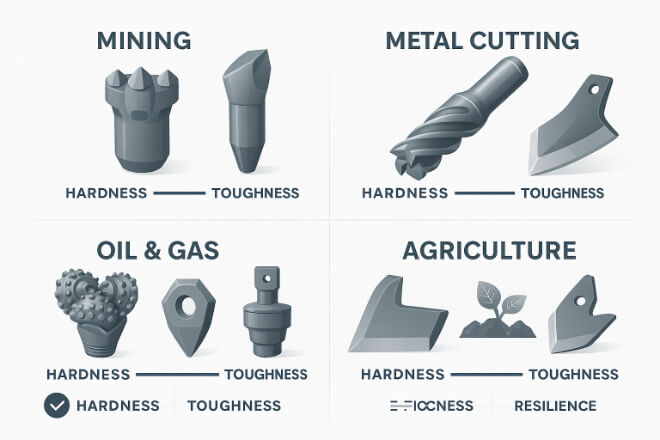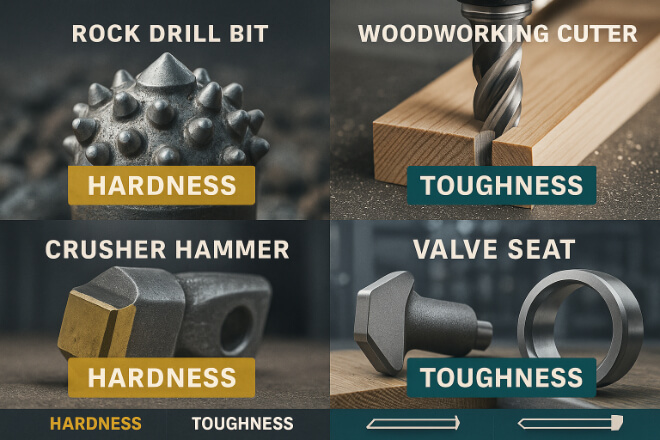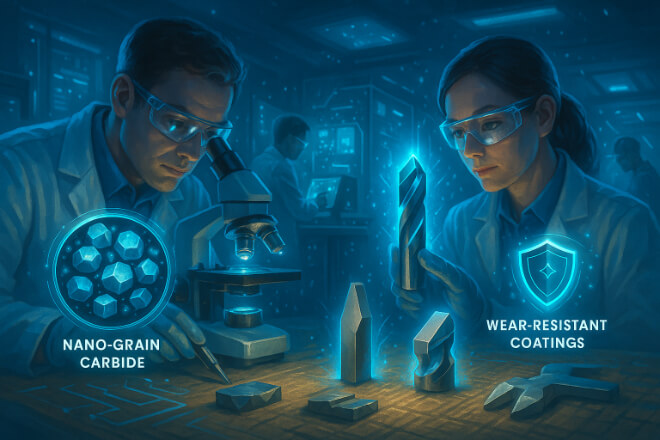了解硬质合金磨损部件的硬度

硬度是材料抵抗刮擦、凹陷或磨损的能力。
简单来说,材料越硬,切割、研磨或抗磨损的能力就越强。
在碳化钨耐磨部件中, 硬度 来自结构中的碳化钨颗粒。
这些颗粒极其坚固,几乎和钻石一样坚硬。
碳化钨的维氏硬度约为1700–2400 HV,远高于钢。
硬度为何重要:
高硬度意味着表面可以抵抗沙子、岩石和其他材料的划痕。
它可延长切削刃、钻头和耐磨板的使用寿命。
即使经过数月的频繁使用,它仍能保持零件的形状。
了解硬质合金耐磨部件的韧性
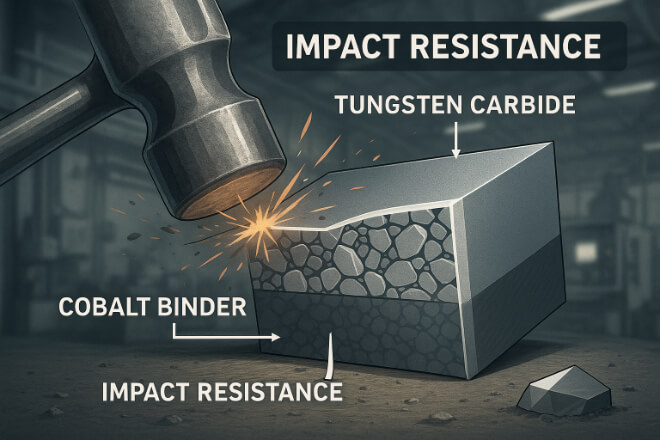
韧性是指材料在受到撞击时抵抗断裂、开裂或崩裂的能力。如果材料韧性不足,即使非常坚硬,也很容易断裂。
在硬质合金磨损部件中, 韧性 来自金属粘合剂,通常是钴(Co)。
粘合剂将硬质碳化物颗粒粘合在一起并吸收冲击。
较高的粘合剂含量会增加韧性,但会降低硬度。
韧性为何重要:
防止在高强度作业(采矿、钻孔、破碎)过程中突然断裂。
降低工具发生灾难性故障的风险。
对于面临振动或冲击载荷的机器部件来说很重要。
| 硬质合金牌号 | 硬度(维氏硬度) | 韧性 | 最佳用途 |
|---|---|---|---|
| 细颗粒、低粘合剂 | 2200–2400 | 低的 | 精密切割、耐磨板 |
| 中等颗粒,中等粘合剂 | 1800–2000 | 中等的 | 通用磨损件 |
| 粗粒、高粘合剂 | 1400–1600 | 高的 | 采矿工具、冲击应用 |
与其他材料相比,碳化物为何具有独特性
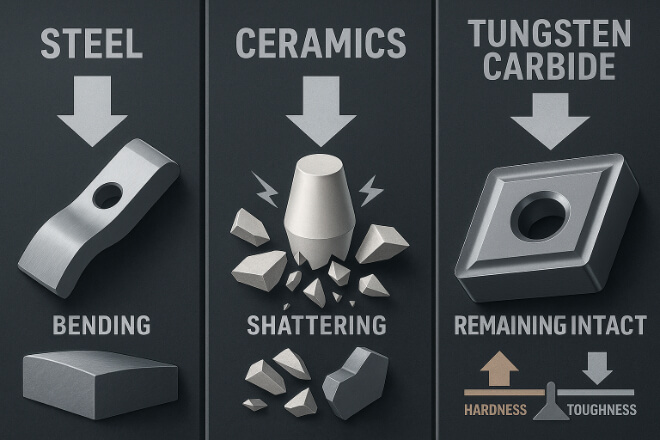
钢可以很坚韧,但硬度却不如陶瓷。陶瓷虽然很硬,但太脆。
碳化钨耐磨件 将两者结合在一种材料中——这要归功于控制晶粒尺寸和粘合剂含量的粉末冶金技术。
主要优点:
更长的使用寿命
极端环境下表现更佳
减少停机时间和更换成本
保持硬质合金磨损部件硬度和韧性的技巧
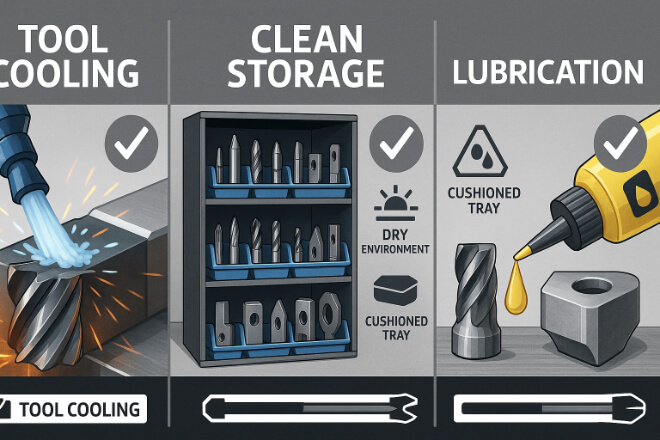
使用过程中避免过热;过热会降低粘合剂强度。
将工具存放在干燥、清洁的地方,以防止粘合剂腐蚀。
在切削操作中使用正确的冷却剂或润滑剂。
为您的特定应用选择正确的等级。
结论
碳化钨耐磨部件的独特之处在于硬度和韧性之间的微妙平衡。
了解这些特性有助于决策者为其行业选择合适的等级。
正确的选择意味着频繁更换和多年可靠性能之间的差异。
如果您想了解任何公司的更多详细信息,请随时 联系我们。

